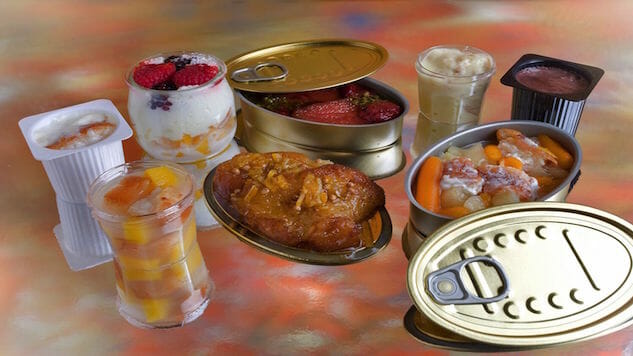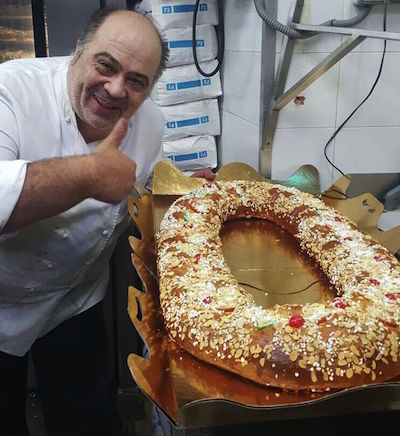Five Spanish Sweet Treats to Try
Photos by Nneka M. Okona and Pastelería Nunos Madrid
When I moved to Madrid three years ago, I knew close to nothing about Spanish food. I knew all
about the endless tapas and the classic faves — sangria and paella. But I found once I started to adjust to the ebb and flow that was living in Spain, there was something far more tantalizing— the sweet smells wafting through the streets from pastelerías, otherwise known as pastry shops. After nine months of living out my Spanish adventure there are five favorites I absolutely tout as must-tries should you ever find yourself in Spain or have the pleasure of being near a Spanish pastry shop or bakery.
Torrijas
 Photo: Pastelería Nunos Madrid
Photo: Pastelería Nunos Madrid
Torrija literally translates to “French toast” in English. But French toast as us Americans know it this sweet treat is not. It looks like French toast on first glance but has a slightly different preparation process. And it’s also not typically drowned with copious amounts of butter and maple syrup once it’s warm and ready.
In true Spanish fashion, torrijas are a simple pleasure enjoyed during Lent and the Easter Season as a whole. For those who choose to not make it at home, during Holy Week, families make sure to place their orders for torrijas at their local pastelería. There’s still a milk bath crusty, stale French baguettes are soaked in, although sometimes the milk is swapped for condensed milk. Dipping the milk soaked bread in egg still happens, too. How are torrijas different from French toast? The bread is flash fried in either olive or sunflower oil and then covered in a mixture of cinnamon and sugar. Quite the (literal) sugar rush.
Where to get torrijas in Madrid: Pastelería Nunos, Calle de Narvaez, 63.
Tarta de manzana
As a native Southerner, I can think back to when I was a young child and my grandmother
would make fresh apple pies during the summer months when I visited her in Alabama. It was the one thing I looked forward to the most — at the conclusion of all the grilled foods I could imagine and my favorite smoked Boston butt shredded for pulled pork — was a slice of apple pie straight from the oven with a molten, melting scoop of vanilla bean ice cream atop it.
But in Madrid, apple tarts (pictured at top) are quite different. The flakiness of the crust is still a characteristic. Instead of the triangular domes deep dish slices of pie typically look like, apple tarts are rectangular. Phyllo dough is the base and the apples, sliced paper thin, are meticulously stacked. Depending on the recipe used, a small bit of custard can be added between the dough and apples. And each rectangle is baked until the pastry puffs up. Doesn’t even need a scoop of ice cream to be amazing.
Where to get tartas de manzana in Madrid: Pastelería Mallorca, Calle Juan Pérez Zúñiga, 26.
Roscón de reyes
 Photo: Pastelería Nunos Madrid
Photo: Pastelería Nunos Madrid
Christmas is different in Madrid. It’s not so much about the presents, the revelry surrounding caroling or making sugar cookies for Santa (known as Papa Noel). In Spain, the Christmas celebration begins on Christmas Eve (nochebuena) and lasts until Three Kings Day (Los Reyes Magicos) on January 6. The icing on the cake is roscón de reyes — or king cake, a colorful ode to the Christmas season.
Where to get roscón de reyes in Madrid: Pastelería Nunos, Calle de Narvaez, 63.
-

-

-

-

-

-

-

-

-

-

-

-

-

-

-

-

-

-

-

-

-

-

-

-

-

-

-

-

-

-

-

-

-

-

-

-

-

-

-

-

 Photo: Nneka M. Okona
Photo: Nneka M. Okona Photo: Nneka M. Okona
Photo: Nneka M. Okona






































